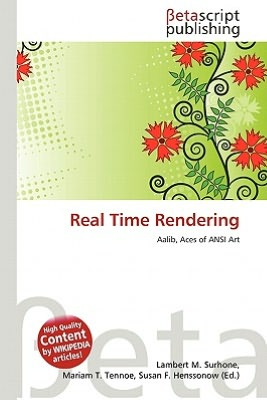I’ve updated our books page a bit, adding the new books I know of at this point, adding links to authors sites and Google Books samples, etc. Please let me know what we’re missing.
![]() A book I know nothing about, but from updating the books page I think I’ll get, is the OpenGL 4.0 Shading Language Cookbook. A reviewer on Gamasutra gives it strong praise, as do all the Amazon customer reviews.
A book I know nothing about, but from updating the books page I think I’ll get, is the OpenGL 4.0 Shading Language Cookbook. A reviewer on Gamasutra gives it strong praise, as do all the Amazon customer reviews.
One I’ve left off for now is Programming GPUs, which I expect is focused on computing with the GPU (no rendering), judging from the author’s background as a quant (his bio’s cute). I also left off a heckuva lot of books on using the Unity engine, to keep the list focused on direct programming vs. using higher-level SDKs.
![]() Along the way I noticed a nice little blog called Video Game Math, by Fletcher Dunn and Ian Parberry, who recently released a second edition of their 3D Math Primer for Graphics and Game Development. Which is pretty good, by the way. My mini-review/endorsement: “With solid theory and references, along with practical advice borne from decades of experience, all presented in an informal and demystifying style, Dunn & Parberry provide an accessible and useful approach to the key mathematical operations needed in 3D computer graphics.” There’s an extensive Google Books sample of much of the first few chapters.
Along the way I noticed a nice little blog called Video Game Math, by Fletcher Dunn and Ian Parberry, who recently released a second edition of their 3D Math Primer for Graphics and Game Development. Which is pretty good, by the way. My mini-review/endorsement: “With solid theory and references, along with practical advice borne from decades of experience, all presented in an informal and demystifying style, Dunn & Parberry provide an accessible and useful approach to the key mathematical operations needed in 3D computer graphics.” There’s an extensive Google Books sample of much of the first few chapters.
In the “old but awesome and free” category this time is Light And Color – A Golden Guide. Check it out before there’s some takedown notice sent out. Yes, it’s small, it’s colorful, and some bits are dated, but there are some pretty good analogies and explanations in there. No kidding. Lots more Golden Guides here (including, incredibly, this one).
I did find that there’s a new edition of “Real Time Rendering“ out, which was a surprise. The subtitle is the best: “Aalib, Aces of ANSI Art”. It’s even sold by Barnes & Noble and Books-A-Million. Happily, I couldn’t find it on Amazon, so maybe they’re scaling back on carrying these so-called books. This particular book is a paperback, and more expensive than the real thing (I like to think our’s is real – it’s the dash between “Real” and “Time” that keeps it real for me). Or I should say it’s more expensive unless you buy ours from these “double your intelligence or no money back” sellers. I believe this phenomenon is from computers tracking competitors’ prices and each one jacking up prices in response.
In case you missed my posts on Betascript Publishing, go here – short version is that they use a computer program to find related articles on Wikipedia, put on a cover (usually the most creative part of the process), and sell it. I’d be interested to know which book is better, their computer-generated one or my own Wikipedia-derived followup, GGGG:RTRtR (Game GPU Graphics Gems: Real-Time Rendering the Redux), reviewed by me here. I really should read my own book some day, there look to be some interesting Wikipedia articles in there.
Finally, I like the concept of book autopsies:




